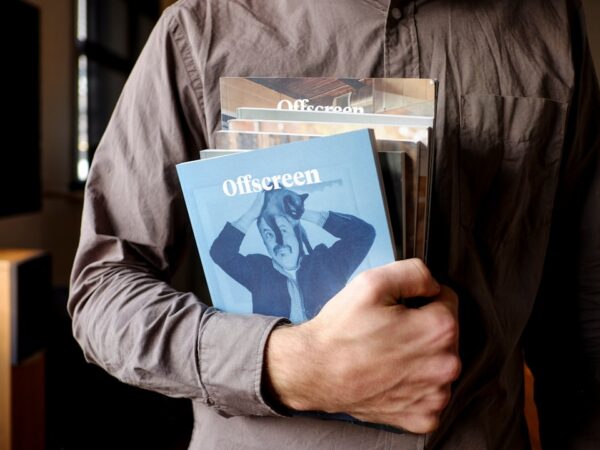
Stephen King’s Cinematic Universe: Book-to-Movie Adaptations
Stephen King is one of the most prolific and influential authors of our time. With over 60 novels and countless short stories to his name, King has become a household name in the horror genre. His works have been adapted into numerous films and television series, making him a force to be reckoned with in the world of book-to-movie adaptations.
The concept of a cinematic universe, popularized by Marvel Studios with their interconnected superhero films, refers to a shared universe in which multiple stories and characters coexist and interact with one another. While King’s works may not have the same level of interconnectedness as the Marvel Cinematic Universe, there is a sense of cohesion and continuity among his adaptations that can be seen as a cinematic universe in its own right.
Key Takeaways
- Stephen King’s Cinematic Universe is a vast collection of horror stories that have been adapted into movies and TV shows.
- The evolution of book-to-movie adaptations in Stephen King’s universe has seen a shift from faithful adaptations to more creative interpretations.
- The most successful Stephen King adaptations on the big screen include The Shining, It, and The Green Mile.
- Directors and producers play a crucial role in bringing Stephen King’s stories to life on the screen.
- Casting is important in Stephen King’s book-to-movie adaptations, with actors like Tim Curry and Jack Nicholson becoming iconic in their roles.
- Adapting Stephen King’s horror novels for the screen can be challenging due to the complexity of the stories and the need to balance horror with character development.
- Special effects have played a significant role in bringing Stephen King’s monsters and supernatural elements to life on the screen.
- Stephen King’s cinematic universe has had a significant impact on the horror genre, inspiring countless filmmakers and writers.
- The future of Stephen King’s book-to-movie adaptations looks bright, with several projects in development, including a new version of The Stand.
- Comparing the original books and their movie adaptations reveals the creative choices made by filmmakers and the ways in which they have interpreted King’s stories.
The Evolution of Book-to-Movie Adaptations in Stephen King’s Universe
The earliest adaptations of Stephen King’s work were often low-budget affairs that struggled to capture the essence of his stories. Films like “Carrie” (1976) and “The Shining” (1980) were successful in their own right, but they differed greatly from modern adaptations in terms of technology and storytelling techniques.
Advances in technology have allowed filmmakers to bring King’s terrifying visions to life in ways that were previously unimaginable. From the practical effects used in “It” (1990) to the CGI monsters of “It” (2017), the evolution of special effects has greatly enhanced the visual impact of King’s adaptations. Additionally, changes in storytelling techniques have allowed for more faithful and nuanced adaptations of his complex narratives.
The Most Successful Stephen King Adaptations on the Big Screen
When it comes to box office success, Stephen King adaptations have proven to be a lucrative venture for studios. Films like “It” (2017) and “The Dark Tower” (2017) have grossed hundreds of millions of dollars worldwide, solidifying King’s status as a bankable author in Hollywood.
In terms of critical acclaim, King’s adaptations have had mixed results. While films like “The Shawshank Redemption” (1994) and “Misery” (1990) have been praised for their performances and storytelling, others like “The Dark Tower” (2017) and “The Tommyknockers” (1993) have been panned by critics. However, it is worth noting that King’s adaptations have often been judged against the high standards set by his original works.
Stephen King’s Cinematic Universe: The Role of Directors and Producers
| Movie Title | Director | Producer | Box Office Gross (in millions) |
|---|---|---|---|
| The Shining | Stanley Kubrick | Stanley Kubrick | 47.3 |
| Carrie | Brian De Palma | Paul Monash | 33.8 |
| The Dead Zone | David Cronenberg | Debra Hill | 20.8 |
| Stand by Me | Rob Reiner | Andrew Scheinman | 52.3 |
| Misery | Rob Reiner | Andrew Scheinman | 61.3 |
| The Shawshank Redemption | Frank Darabont | Niki Marvin | 58.3 |
| The Green Mile | Frank Darabont | David Valdes | 286.8 |
| It | Andy Muschietti | Barbara Muschietti | 700.4 |
| Doctor Sleep | Mike Flanagan | Trevor Macy | 72.3 |
The success of Stephen King’s adaptations can largely be attributed to the creative teams behind them. Directors like Brian De Palma (“Carrie”), Stanley Kubrick (“The Shining”), and Frank Darabont (“The Shawshank Redemption”) have brought their unique visions to King’s stories, resulting in some of the most memorable adaptations in cinematic history.
Producers also play a crucial role in shaping the direction of King’s adaptations. The involvement of producers like J.J. Abrams (“11.22.63”) and Andy Muschietti (“It”) has brought a fresh perspective to King’s works, attracting new audiences while staying true to the essence of his stories.
The Importance of Casting in Stephen King’s Book-to-Movie Adaptations
One of the key factors in the success of Stephen King’s adaptations is the casting of iconic characters. Performances by actors like Sissy Spacek as Carrie White, Jack Nicholson as Jack Torrance, and Tim Curry as Pennywise have become synonymous with their respective roles, elevating the films to cult status.
However, casting for King’s adaptations can be a daunting task, particularly when it comes to iconic characters like Pennywise and Carrie White. Finding actors who can bring these complex and often terrifying characters to life is crucial to the success of the films. The recent casting of Bill Skarsgård as Pennywise in the 2017 adaptation of “It” was met with skepticism initially, but his performance was widely praised and helped make the film a box office hit.
The Challenges of Adapting Stephen King’s Horror Novels for the Screen
Adapting horror novels for the screen presents its own unique set of challenges. One of the main challenges is capturing the scares and suspense that King’s stories are known for. What works on the page may not necessarily translate well to the screen, and filmmakers must find creative ways to evoke fear and tension in their adaptations.
Another challenge is translating internal monologues and introspective moments to visual storytelling. King’s novels often delve deep into the minds of his characters, exploring their fears, desires, and motivations. Filmmakers must find ways to convey these inner thoughts and emotions without relying too heavily on voiceover or exposition.
Different adaptations have tackled these challenges in different ways. Films like “The Shining” (1980) and “It” (2017) have used atmospheric cinematography and sound design to create a sense of dread, while others like “Carrie” (1976) and “Misery” (1990) have focused on the psychological aspects of horror.
The Role of Special Effects in Stephen King’s Cinematic Universe
Special effects play a crucial role in bringing the terrifying creatures and supernatural elements of Stephen King’s stories to life. From the demonic clown Pennywise to the telekinetic powers of Carrie White, these visual effects are essential in creating a sense of awe and terror.
Advances in technology have greatly impacted the use of special effects in King’s adaptations. Practical effects were often used in earlier adaptations, relying on prosthetics, makeup, and animatronics to create realistic and horrifying creatures. However, the advent of CGI has allowed for more seamless integration of these effects, resulting in more visually stunning and immersive adaptations.
Stephen King’s Cinematic Universe: The Impact on the Horror Genre
Stephen King’s adaptations have had a significant impact on the horror genre as a whole. His stories have inspired countless filmmakers and writers, shaping the way horror stories are told on screen.
One of the most notable impacts of King’s adaptations is the rise of “elevated horror.” Films like “Get Out” (2017) and “Hereditary” (2018) have been praised for their thought-provoking storytelling and social commentary, drawing inspiration from King’s ability to blend horror with deeper themes and character development.
Additionally, King’s adaptations have pushed the boundaries of what is considered acceptable in mainstream horror. His stories often tackle taboo subjects and explore the darkest corners of human nature, challenging audiences to confront their fears and anxieties.
The Future of Stephen King’s Book-to-Movie Adaptations
The future looks bright for Stephen King’s adaptations, with several projects currently in development. One of the most highly anticipated adaptations is “The Stand,” a miniseries that will bring King’s epic post-apocalyptic novel to life. Another upcoming adaptation is “Salem’s Lot,” a film that will revisit one of King’s most iconic vampire stories.
As technology continues to advance, the adaptation process may change in the future. Virtual reality and augmented reality could potentially offer new ways to experience King’s stories, immersing audiences in his terrifying worlds like never before.
Stephen King’s Cinematic Universe: A Comparison of the Original Books and Their Movie Adaptations
When comparing Stephen King’s original books to their movie adaptations, it is important to consider that each medium has its own strengths and limitations. While some adaptations have made changes to plot, characters, and themes, these changes are often necessary to translate the essence of King’s stories to the screen.
Some adaptations, like “The Shawshank Redemption” (1994) and “Stand by Me” (1986), have been praised for their faithfulness to the source material. Others, like “The Shining” (1980) and “Carrie” (1976), have taken creative liberties that have divided fans and critics.
Ultimately, the success of an adaptation should not be solely judged on its fidelity to the original source material, but rather on its ability to capture the spirit and essence of King’s stories.
FAQs
What are some Stephen King books that have been made into movies?
Some Stephen King books that have been made into movies include “The Shining,” “Carrie,” “It,” “Misery,” “The Green Mile,” “Pet Sematary,” and “The Shawshank Redemption.”
Which Stephen King book made into a movie was the most successful?
“The Shawshank Redemption” is considered the most successful Stephen King book made into a movie, both critically and commercially. It received seven Oscar nominations and has since become a beloved classic.
Are all Stephen King books made into movies successful?
No, not all Stephen King books made into movies are successful. Some adaptations have been critically panned and/or commercially unsuccessful, such as “Dreamcatcher” and “Thinner.”
Why are Stephen King books so popular for movie adaptations?
Stephen King’s books are popular for movie adaptations because they often feature compelling characters, suspenseful plots, and supernatural elements that translate well to the big screen. Additionally, King has a large and dedicated fan base that is eager to see his stories brought to life.
Has Stephen King ever been involved in the movie adaptations of his books?
Yes, Stephen King has been involved in some of the movie adaptations of his books. He has written screenplays for some films, made cameo appearances in others, and has even directed a few adaptations himself, such as “Maximum Overdrive” and “Sleepwalkers.”


















